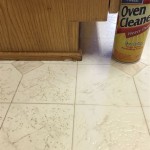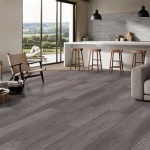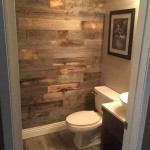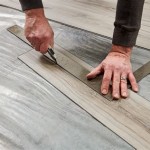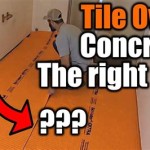Does Double-Sided Carpet Tape Ruin Hardwood Floors?
Double-sided carpet tape is a popular choice for temporarily securing rugs and carpets to hardwood floors. Its convenience and ease of application are appealing, especially for renters or those who frequently rearrange their living spaces. However, the question of whether it damages hardwood floors remains a significant concern. Understanding the potential risks and taking preventative measures is crucial to maintaining the integrity and aesthetic appeal of hardwood flooring.
The primary appeal of double-sided carpet tape lies in its ability to prevent rugs from slipping, bunching, or creating a tripping hazard. This is particularly important in high-traffic areas or homes with children and pets. The tape offers a relatively inexpensive and readily available solution compared to other rug-securing methods, such as rug pads or professional installation. The ease of application also allows for DIY convenience, requiring minimal tools or expertise.
However, the seemingly simple solution can present several potential risks to hardwood floors, depending on various factors, including the type of tape used, the type of finish on the hardwood, the duration the tape is applied, and the removal method employed. The likelihood of damage increases when these factors are not carefully considered. Damage can range from minor residue to significant finish removal and even wood damage.
Understanding the Potential Damage Mechanisms
The potential for damage arises from several key mechanisms. The adhesives used in carpet tape are designed to create a strong bond with both the rug and the floor surface. While this strong bond is desirable for security, it can also cause problems when the tape is removed. Some adhesives can leave behind a sticky residue that is difficult to remove, requiring harsh chemicals or abrasive cleaning methods that can damage the floor's finish. Furthermore, the adhesive's interaction with the floor's finish over time can lead to discoloration or staining.
Another significant risk is the direct removal of the floor's finish. When the tape is peeled away, the adhesive can pull off the protective layer of polyurethane or other finish, exposing the bare wood beneath. This is particularly common with older or less durable finishes. Once the finish is removed, the exposed wood is more vulnerable to scratches, dents, and moisture damage. This can lead to long-term degradation of the flooring and require costly refinishing.
In some cases, the adhesive can react with the wood itself, leading to staining or discoloration. This is more likely to occur with certain types of wood or when the tape is left in place for extended periods. The prolonged contact can cause the adhesive chemicals to seep into the wood pores, leaving a permanent mark that is difficult to conceal or remove. This is especially problematic with lighter-colored woods where stains are more visible.
Furthermore, the removal process itself can cause physical damage to the floor. Aggressive scrubbing or scraping to remove stubborn adhesive residue can scratch or gouge the surface. Using improper cleaning tools or chemicals can exacerbate the damage, leading to further degradation of the finish or wood. Therefore, careful and gentle removal methods are crucial to minimize the risk of damage.
Factors Influencing the Severity of Damage
The extent of damage caused by double-sided carpet tape depends on a confluence of factors. First, the type of tape used plays a crucial role. Some tapes are specifically designed to be low-residue and safe for use on hardwood floors, while others contain aggressive adhesives that are more likely to cause damage. It is important to choose a tape that is specifically labeled as safe for hardwood floors and to read the manufacturer's instructions carefully.
The type of hardwood floor finish is another critical factor. Floors with a durable polyurethane finish are generally more resistant to damage than those with older or less robust finishes, such as varnish or shellac. The age and condition of the finish also play a role. Older finishes are more likely to be brittle and prone to chipping or peeling, making them more susceptible to damage from carpet tape.
The duration the tape is left on the floor also significantly impacts the potential for damage. The longer the tape remains in place, the greater the chance of the adhesive bonding tightly to the finish and causing residue or finish removal upon removal. Prolonged contact can also increase the likelihood of chemical reactions between the adhesive and the floor finish or wood itself. It is advisable to remove the tape as soon as it is no longer needed to minimize these risks.
The climate and environmental conditions in the room can also contribute to damage. High humidity and temperature fluctuations can weaken the adhesive bond, leading to residue buildup or premature failure of the tape. These conditions can also affect the wood's expansion and contraction, potentially exacerbating any existing damage caused by the tape.
Finally, the removal method used is arguably the most critical factor in determining the extent of damage. Using aggressive or improper techniques can cause significant damage, even if the tape is relatively low-residue. Gentle and patient removal methods, combined with appropriate cleaning solutions, are essential to minimize the risk of harming the hardwood floor.
Preventative Measures to Minimize Risk
While the potential risks associated with double-sided carpet tape are undeniable, several preventative measures can significantly reduce the likelihood of damage. The most important step is to choose the right type of tape. Opt for a tape specifically designed for hardwood floors, often labeled as "low-residue" or "removable." Avoid tapes with aggressive adhesives or those intended for use on other surfaces, such as concrete or carpeting. Reading product reviews and consulting with flooring professionals can help in selecting a suitable tape.
Before applying the tape, it is advisable to test a small, inconspicuous area of the floor to ensure that it does not cause any immediate discoloration or damage. This allows for observation of any adverse reactions before applying the tape to a larger area. The test area should be monitored for several days to assess the long-term effects of the tape on the floor's finish.
Proper surface preparation is also crucial. Clean the floor thoroughly to remove any dust, dirt, or debris that could interfere with the adhesive bond. Ensure the floor is completely dry before applying the tape. Using a mild cleaner specifically designed for hardwood floors is recommended.
When applying the tape, use only the amount needed to secure the rug effectively. Avoid using excessive amounts of tape, as this can increase the risk of residue buildup and damage during removal. Apply the tape in short strips rather than long continuous runs to minimize the surface area in contact with the floor.
Remove the tape as soon as it is no longer needed. Avoid leaving the tape in place for extended periods, as this increases the likelihood of adhesive bonding to the finish and causing damage. Regularly check the tape to ensure it is still secure and to remove any loose or damaged portions.
When removing the tape, use gentle and patient techniques. Start by carefully peeling back a corner of the tape and slowly working your way along the edge. Avoid pulling the tape upwards at a sharp angle, as this can increase the risk of pulling off the finish. Instead, try to peel the tape back parallel to the floor.
If the tape leaves behind any residue, use a mild adhesive remover specifically designed for hardwood floors. Avoid using harsh chemicals or abrasive cleaners, as these can damage the finish. Follow the manufacturer's instructions carefully and test the remover in an inconspicuous area before applying it to the entire surface.
For stubborn residue, try using a soft cloth dampened with warm water and a mild dish soap. Gently rub the residue in a circular motion until it loosens and can be wiped away. Avoid using excessive pressure or abrasive scrubbing, as this can scratch the floor.
After removing the tape and any residue, clean the floor thoroughly with a mild cleaner specifically designed for hardwood floors. This will help to remove any remaining traces of adhesive remover and restore the floor's natural shine. Consider applying a fresh coat of floor polish or wax to protect the finish and prevent future damage.
In conclusion, while double-sided carpet tape can offer a convenient solution for securing rugs to hardwood floors, it poses a potential risk of damage. Understanding the mechanisms of damage, considering the factors influencing severity, and implementing preventative measures are crucial to preserving the integrity and beauty of hardwood flooring. Careful tape selection, proper surface preparation, gentle removal techniques, and appropriate cleaning methods can minimize the risk of damage and ensure that hardwood floors remain in optimal condition.

Will Double Sided Carpet Tape Damage My Hardwood Floor Tile By All Flooring Now

Pros And Cons Of Applying Rug Tape On Your Floors Carpets Rugpadusa

Types Features And Specific Uses Of Carpet Tape

Will Double Sided Carpet Tape Leave A Sticky Residue Or Damage My Floor Tile

Does Double Sided Rug Tape For Carpet Ruin Hardwood Floors Opalus Pack

Does Double Sided Rug Tape For Carpet Ruin Hardwood Floors Opalus Pack

Types Features And Specific Uses Of Carpet Tape

How To Remove Double Sided Carpet Tape On Linoleum Kitchen Floor Hometalk

Xfasten Premium Carpet Tape 2 X 5 Yards Residue Free Rug Adhesive For Hardwood Concrete Tiles More

Roberts Indoor Outdoor 3 In X 15 Ft Double Sided Carpet Tape Roll 50 605 12 The Home
See Also
